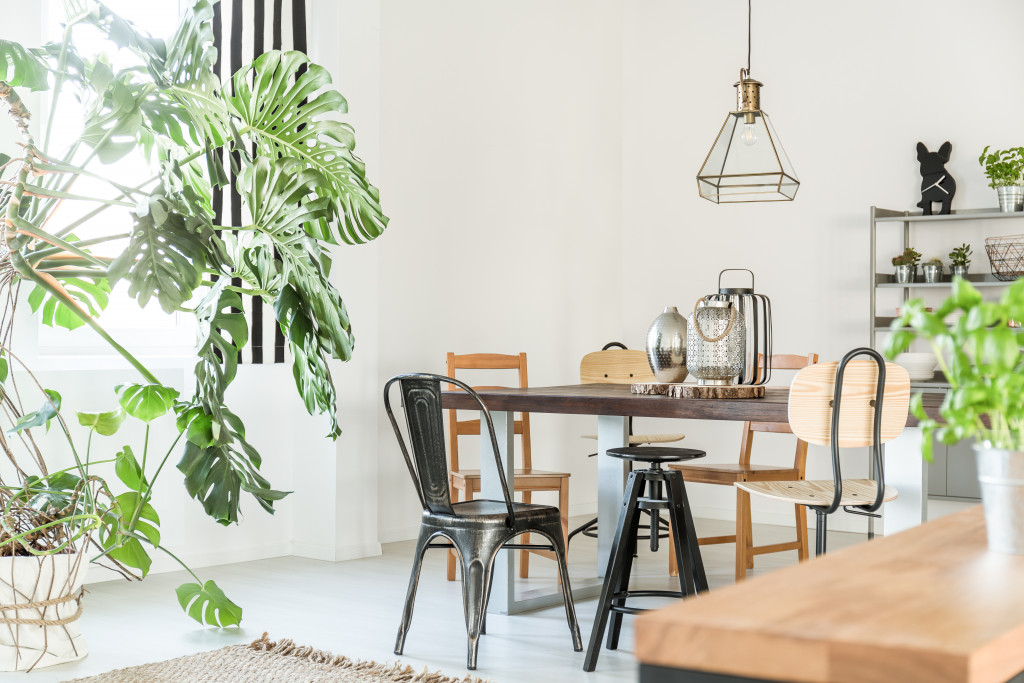- Declutter your home to create a peaceful atmosphere.
- Create a cozy reading nook to facilitate reading and family bonding.
- Incorporate nature into your home with houseplants, living walls, outdoor gardens and indoor herb growing.
- Use calming colors to create a serene atmosphere in the home.
- Incorporate positive affirmations as part of home decor to promote a positive mindset in children.
Raising children is challenging, and parents strive to provide a positive environment for their kids. A positive environment includes the physical space and the emotional atmosphere. Creating a positive environment requires conscious effort, but it is worth it as it fosters healthy growth and development of children. This guide will provide five tips to help raise your children in positive environments.
1. Declutter Your Home
A cluttered home can create a chaotic and stressful environment for children. Decluttering your home can make it more peaceful and promote better focus and creativity in children. It can also create a sense of order and structure to comfort children. Encourage your children to declutter their belongings regularly and make it a fun activity.
2. Create a Cozy Reading Nook
Reading is an important activity for children, and having a designated space can create a positive environment for them. Creating a cozy reading nook can make reading more appealing and enjoyable for children. Include comfortable seating, proper lighting, and a collection of age-appropriate books. Reading can be a great bonding activity for the family, so make it a habit to read together.
When designing the reading area, remember that a cozy environment helps nurture a love for books and encourages children to read more. Consider adding pillows or cushions to make the space softer and more inviting. To add color or design to the room, hang up artwork or use fun rugs and wall decals. Soft lighting is also important for a comfortable atmosphere. A standing or table lamp can provide the right amount of illumination without creating a harsh glare that might be distracting.
3. Incorporate Nature into Your Home

Incorporating nature in your home can positively impact your children’s well-being. This will ensure that your children can access nature in their everyday life. Studies show that outdoor spending increases concentration, improves problem-solving skills, and reduces stress.
Here’s how you can incorporate nature into your home:
Bring in Houseplants
Houseplants are an easy, inexpensive way to add a touch of nature to your home. They can help purify the air, offer aesthetic value, and bring life to any room. You can pick up houseplants such as succulents, peace lilies, spider plants, or fiddle leaf figs from your local plant nursery and place them around the house. Depending on their size, some may need to be placed higher out of reach from children if you have small kids at home.
Create a Living Wall
Another great way to incorporate nature into your home is by creating a living wall, essentially a vertical garden. For larger homes, you can opt for a larger vertical garden that occupies an entire wall and provides ample space to grow plants. Otherwise, if you’re working with limited space, you can hang smaller planters along the wall in different spots for a cascading effect.
Design an Outdoor Garden
Creating an outdoor garden is a great way to use your backyard and bring nature into your home. Professional garden landscaping can provide you with the perfect environment for your children to explore their surroundings and unleash their creative side. A professional will ensure that there are various plants, flowers, and trees to keep your children engaged. Not only will the garden be aesthetically pleasing, but it can also provide interactive learning opportunities for your children.
Grow Herbs Indoors
Lastly, why not bring some of nature indoors by growing herbs inside your home? All you need is a sunny window, some planters, potting soil, and your favorite herb seeds. Check the label for instructions on plants and care for each herb. Not only will this give children an opportunity to understand the process from seed to full-grown herb, but once ready, they’ll also be able to use it in the kitchen!
4. Use Calming Colors

The colors used in a home can significantly impact the atmosphere. Calming colors such as blue, green, and lavender can create a serene environment that can be soothing to children. These colors can also promote better sleep and relaxation. Avoid using bright colors that can be overstimulating and create an anxious environment.
5. Incorporate Positive Affirmations
Positive affirmations can help promote a positive mindset in children. Incorporate positive affirmations in your home decor, such as posters or wall art. Encourage your children to repeat positive affirmations daily, such as “I am smart,” “I am loved,” and “I can do anything I set my mind to.” This can help build their self-esteem and create a positive environment at home.
To Wrap It Up
Raising children in positive environments is crucial for their well-being and growth. The tips in this article can help you create a positive environment in your home. Remember that creating a positive environment requires conscious effort, but it is worth it in the long run. Start small, and gradually incorporate the tips into your daily routine.




